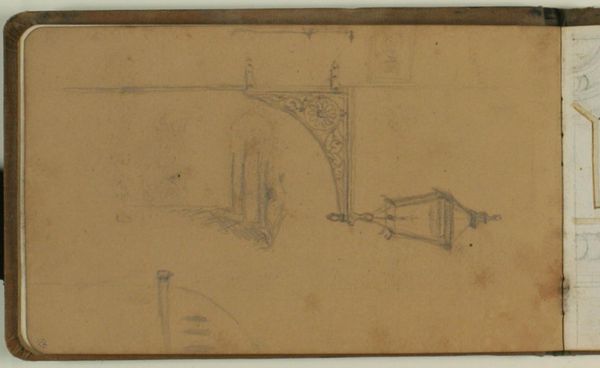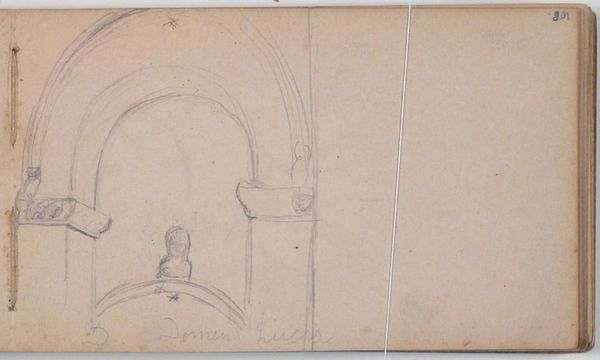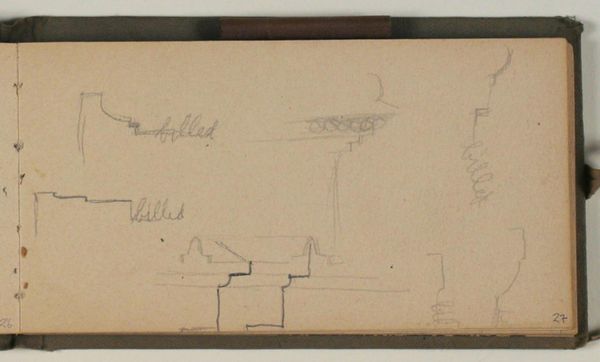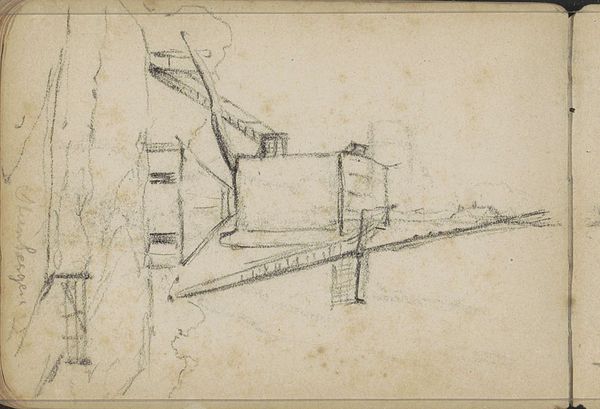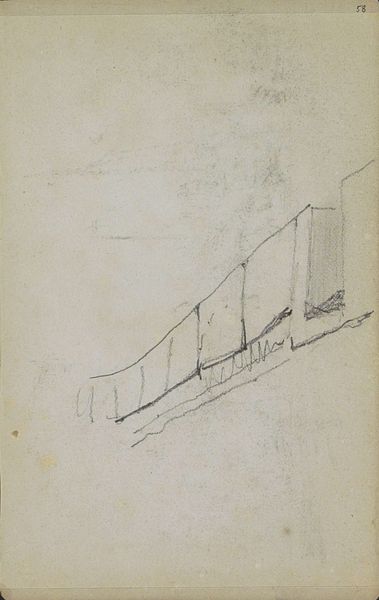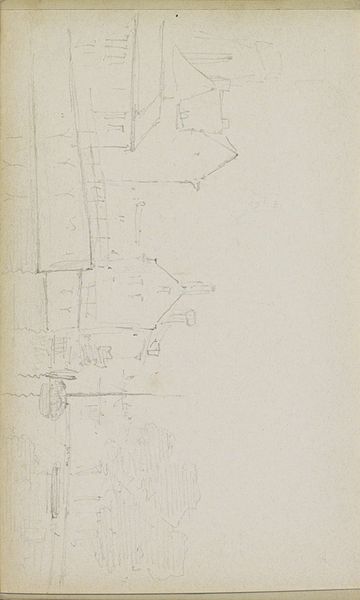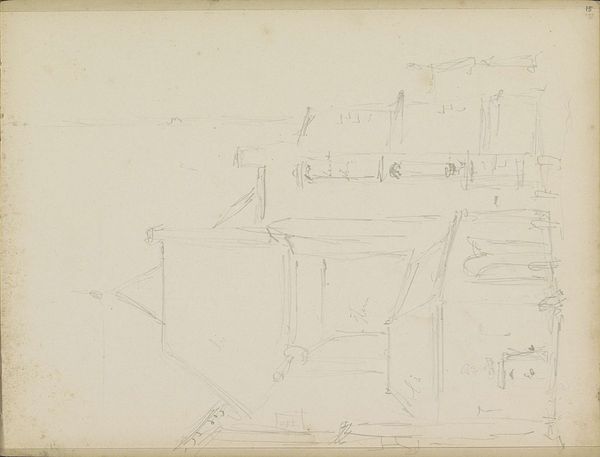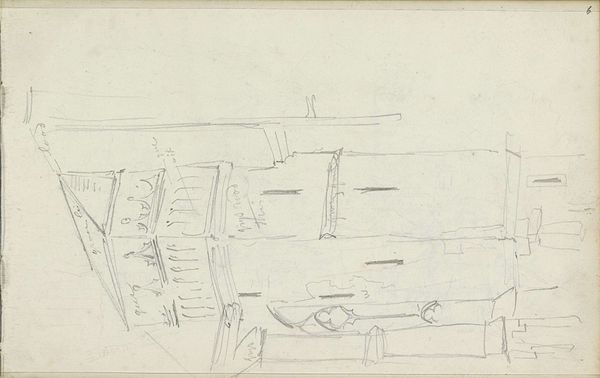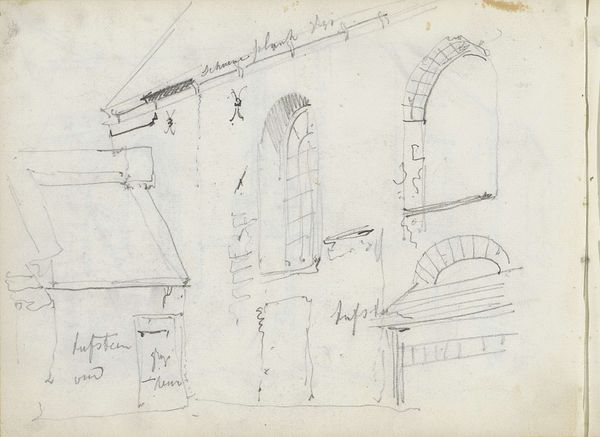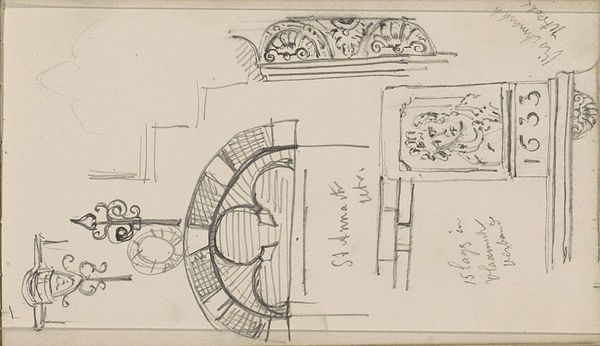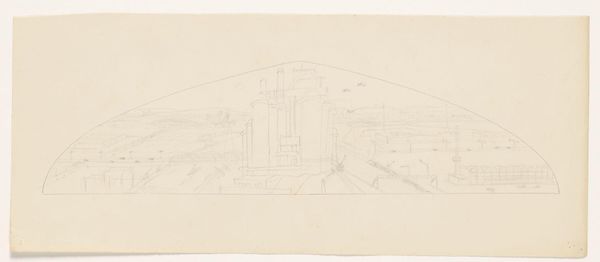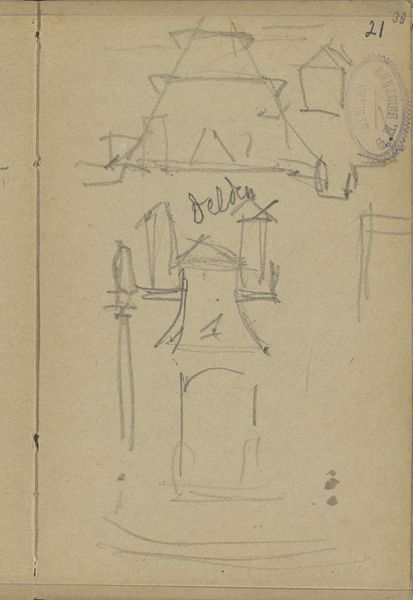
Dimensions: 101 mm (height) x 168 mm (width) (bladmaal)
Curator: This work, created in 1896 by Niels Larsen Stevns, captures exterior and detail views of the San Bernardino in Verona, rendered in pencil and colored pencil. Editor: My immediate impression is of fragments, whispers of a place. The lines are tentative, almost ethereal. It feels like capturing fleeting moments rather than presenting a concrete image of architecture. Curator: Indeed. Stevns, deeply influenced by Impressionism, was likely less interested in a precise architectural rendering and more focused on capturing the play of light and atmosphere. The choice of pencil, and especially colored pencil, supports this notion. It was more about impression than meticulous detailing. Editor: I'm curious about this fragmentation. Is it just an artistic choice or does it reflect a larger trend of the time? The way the architectural details are sectioned feels like a reflection on power structures, suggesting impermanence despite the architecture's attempt at imposing itself. Are we seeing an underlying critique? Curator: I think the sections suggest, to me, Stevns using the sketchbook to practice specific elements of the church’s architectural design. There may have been specific techniques that he wished to examine closely with these studies before executing them elsewhere. So the sectioning might be artistic and practical. It’s a very efficient, workmanlike strategy for composing these particular sheets. Editor: That resonates – that makes more sense. I guess that even architectural rendering can contain subjectivity. So, what purpose did works like these hold in the artistic ecosystem? Curator: Drawings like this offered artists an avenue to hone their observational skills and engage with the world around them, offering a break from the highly structured environments of academic painting. Furthermore, landscape and cityscape art grew in popularity at the fin de siècle, when industrial progress changed society and the natural world significantly, leading to both anxieties about progress and great nostalgia for pastoral idylls. Editor: That contextual background is incredibly enriching and frames the sketch so completely! It’s incredible to look at art like this in the modern day with modern viewpoints. Curator: Exactly! Placing a work like this inside a societal moment shows the ways artists negotiated a sense of place in the quickly-changing world, making "Eksteriør og detalje fra S. Bernadino, Verona" a touchstone of a historic moment and worldview.
Comments
No comments
Be the first to comment and join the conversation on the ultimate creative platform.
